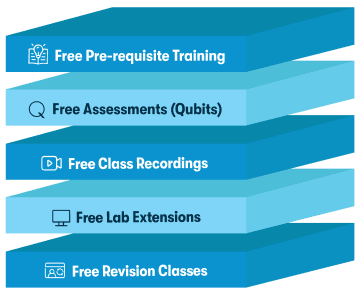Unable to find what you're searching for?
We're here to help you find itCertified Application Security Engineer Java (CASE Java) Course Overview
The Certified Application security Engineer (CASE) Java course is a comprehensive certification program designed to equip learners with the necessary skills and knowledge to secure Java applications. It addresses the need for security in the software development lifecycle (SDLC) and focuses on the importance of implementing Secure methodologies and practices in today's insecure operating environment.
Module 1 introduces the fundamentals of application security, threats, and attacks, providing a strong foundation for understanding the risks involved in software development. Module 2 emphasizes the importance of gathering security requirements before coding begins. Module 3 covers Secure application design and architecture, ensuring that security is integrated from the very start of the design process.
As learners progress through the course, they will engage with secure coding practices across various domains: Module 4 deals with Input validation, Module 5 with Authentication and authorization, Module 6 with Cryptography, Module 7 with Session management, and Module 8 with Error handling. Module 9 delves into the tools and methodologies for both static and dynamic application security testing (SAST & DAST), and Module 10 wraps up with Secure deployment and Maintenance strategies.
The CASE Java certification provides a clear roadmap for professionals to understand and implement security measures in Java applications, thereby enhancing their credentials and meeting industry demands for secure software development.
Successfully delivered 16 sessions for over 40 professionals
Purchase This Course
USD
View Fees Breakdown
| Course Fee | 2,730 |
|
Total Fees (with exam) |
2,730 (USD) |
USD
View Fees Breakdown
| Course Fee | 2,100 |
|
Total Fees (with exam) |
2,100 (USD) |
USD
View Fees Breakdown
| Flexi Video | 16,449 |
| Official E-coursebook | |
| Exam Voucher (optional) | |
| Hands-On-Labs2 | 4,159 |
| + GST 18% | 4,259 |
|
Total Fees (without exam & Labs) |
22,359 (INR) |
|
Total Fees (with Labs) |
28,359 (INR) |
Select Time
Select Date
| Day | Time |
|---|---|
|
to
|
to |
♱ Excluding VAT/GST
You can request classroom training in any city on any date by Requesting More Information
Inclusions in Koenig's Learning Stack may vary as per policies of OEMs


Scroll to view more course dates
♱ Excluding VAT/GST
You can request classroom training in any city on any date by Requesting More Information
Inclusions in Koenig's Learning Stack may vary as per policies of OEMs
Suggestion submitted successfully.
Koenig Learning Stack
Inclusions in Koenig's Learning Stack may vary as per policies of OEMs

